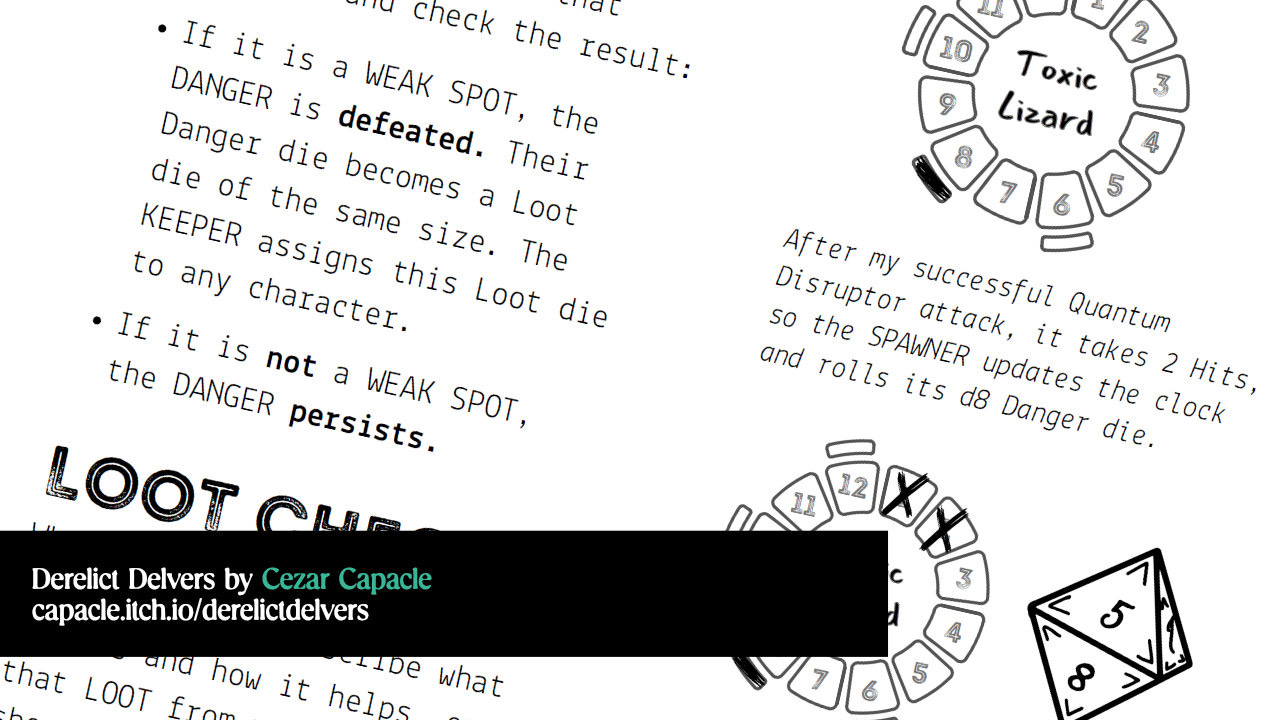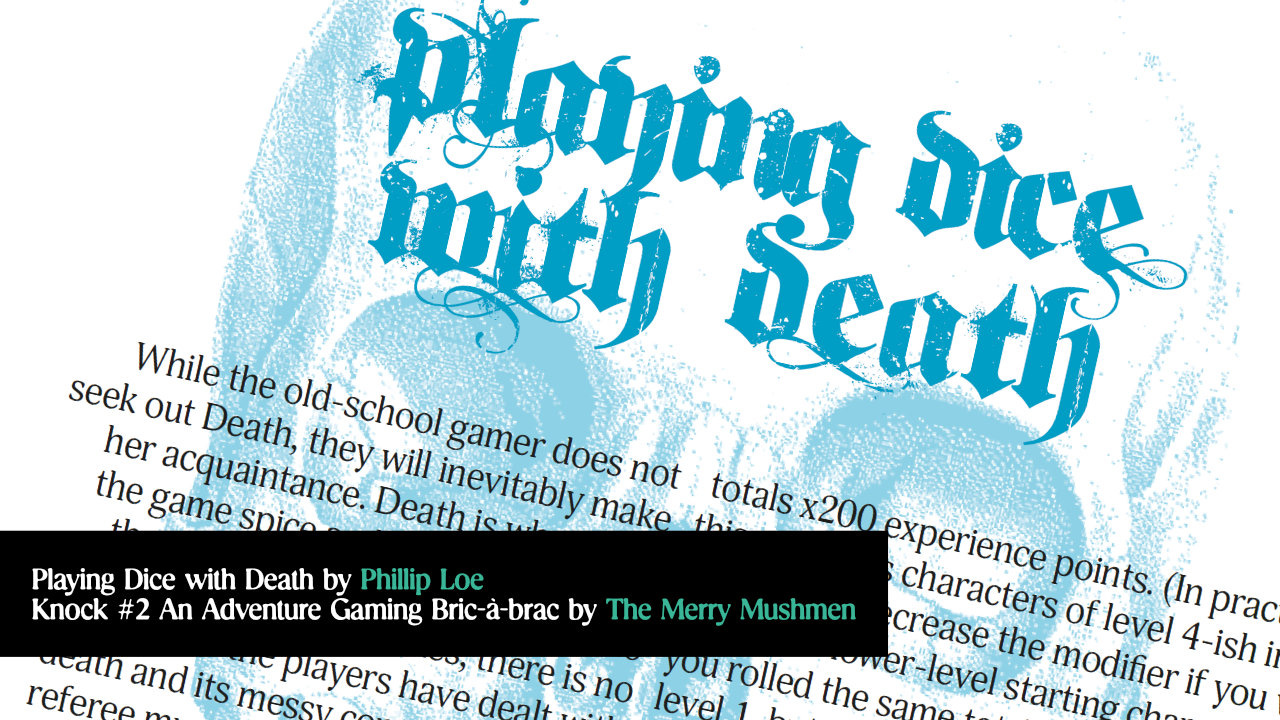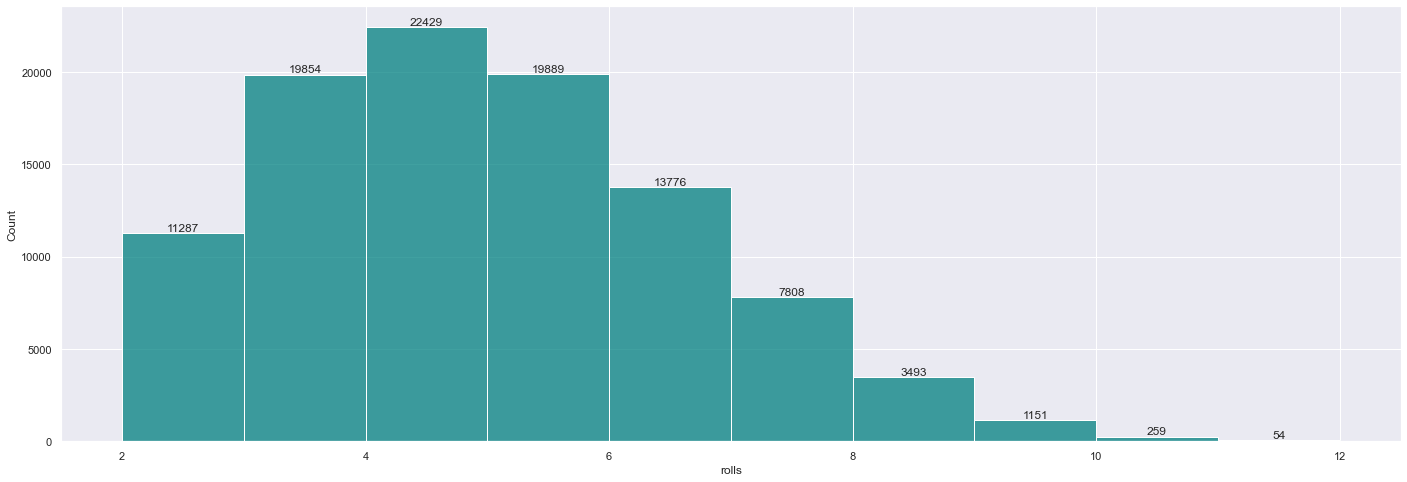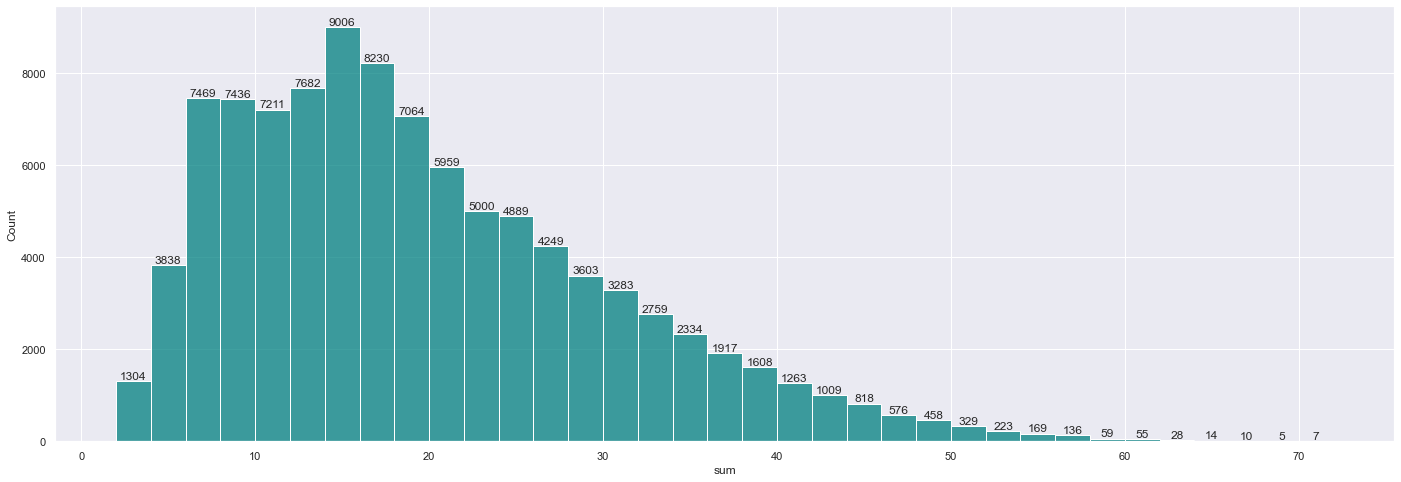Giant Enemy Crab!
Attacking weak points for massive damage
Last week we talked about 10 Tips for Aspiring Board Game Designers.
This week, inspired by a recent Twitter post, we are looking at attacking weak points for massive damage!
Specifically we’ll check out two ways to use a mechanism that relies on rolling the same number twice: Derelict Delvers by Cezar Capacle, and Playing Dice with Death by Phillip Loe.
Derelict Delvers
Derelict Delvers takes the idea of weak points and turns it into a fascinating mechanism. Cezar has a great thread describing it, but here’s a summary.
Dangerous encounters such as toxic lizards and crystal spiders begin with a Danger Clock (circle shown above). It’s marked as a d6, d8, or d10 size relating to increasing threat.
Let’s say Boggs the Plasmatic Engineer hits the Toxic Lizard with a Quantum Shotgun dealing 2 damage. Two boxes are marked off the clock. Pretty standard.
The difference is that each crossed-off number now acts as a weak spot.
Then they roll the Danger Die (e.g. d8). If the die roll matches one of the crossed off numbers on the Danger Clock, that’s it. The monster is dead! Otherwise the encounter will continue.
The damage always accumulates, but you never know exactly when the fight might end.
There is also a really interesting note about multiple Danger Clocks per boss monster:
For boss battles, you can have multiple clocks for the same enemy! Your d12 Steel Beetle can have a d8 Carapace that needs to be taken down before it can be harmed!
This concept could lead to some really epic final battles where the players are shocked to find out that it isn’t even the monster’s final form. Although I haven’t personally played it, the Primal board game’s combat system appears to do a similar thing with staged combat.
In Derelict Delvers, the same system is used for players as well. They develop weak spots on their own clocks (i.e. Frame, Focus, Flair). Get hit on a weak spot, and you are taken out!
I love this Danger Clock / Weak Spot concept for a few reasons:
It adds some unpredictability about when the combat will end. It is another way to move away from the simple “I hit you. You hit me.” until one side has no more hit points. Narratively, it gives chances to explain how the lizard was struck down in just two blows!
It still has a fixed end. Even though there’s randomness, the hits keep accumulating. Get to the original die amount (e.g. 8) and it’s over. Low chance for it dragging on too long.
It’s extremely versatile. The same system can be used for monsters, dangerous encounters, player health tracking and other parts of the game. In this way players need to learn less systems, providing a chance to streamline the gameplay.
Cezar points out that this mechanism was inspired by something similar in That Dungeon Game with Dragons & Stuff by Igor Moreno.
If you are familiar with similar systems, I’d love to hear about them in the comments!
Playing Dice with Death
By chance, I recently came across a similar mechanism with an entirely different use in Knock #2 by The Merry Mushmen.
In a three page piece called Playing Dice with Death, Phillip Loe describes a system to respawn new characters in old-school TTRPGs (where they might be prone to early deaths). It addresses the question of how high of a level should the new character begin. The solution is to make it a mini-game vs. Death!
You roll up a fresh character as usual, but then you enter into a push-your-luck game.
Roll 2d6 and record the sum (e.g. 4+5=9). At which point you can choose to either (A) stop there or (B) continue rolling and do it again.
If you stop, you add up all the recorded numbers, multiply it by 200 and that’s your starting XP.
If you choose to keep going, however, and roll a sum that’s already been recorded, you bust. No XP bonus, and you start at Level 1.
You do, however, get a consolation prize in the form of a “boon” or perk from the random tables included. Sure, you lost and begin at Level 1, but you might now “keep all your memories in marbles that you store in a small pouch on your waist.”
I was curious how far you should push your luck in this system. Perhaps there’s a clear break-point that would guide how many times to roll? A bit of Python might have the answer!
Here are 100,000 runs where the number of rolls until busting (i.e. getting a duplicate number) is recorded:
The chance of busting after one roll is zero, of course. Jumps way up at two rolls, and then three and four. After that, there’s a decreasing chance of ever getting to the higher number of rolls. It’s unlikely you’d be that person with the 54 in 100,000 (0.054%) chance of getting to 10 successful rolls and then busting on the 11th.
Here’s the histogram plot for the sum you’d walk away with if you stopped right before busting (N=100,000):
Based on this, 1-2 rolls are quite safe, but I’d skip that third roll. I’m not much of a gambler.
This system is interesting because:
It takes a potentially mundane or even disappointing part of the system (e.g. death of your character) and turns it into a mini-game. Granted, busting on the second roll might make that feeling even worse, but think of making it a third or fourth roll!
Push your luck systems are inherently exciting. It could be the dice rolling in John Company (mentioned here) or pulling from your bag in Wonderlands War, there’s a thrill in not knowing how far is too far!
While used in a completely different way from the weak points in Derelict Delvers, I think there’s definitely some similarities here: rolling dice to accumulate a list that increases the risk of success/failure.
Conclusion
Some things to think about:
Accumulating risk is a versatile and interesting mechanism. I’ve mentioned this in Muffins and the Risk of Being Eaten previously. There are many ways to do it, either by manually increasing the target like Exclusion Zone Botanist, or having the targets (i.e. weak spots) randomly generated like Derelict Delvers.
Push your luck can add some excitement when applied correctly. I certainly wouldn’t just slap push your luck mechanisms everywhere, as they run the risk of adding too much randomness. Applied carefully and thoughtfully, however, they can inject thematic excitement into both TTRPGs and board games. Danger Clocks in Derelict Delvers is a wonderful example.
This mechanism could be used in board games. While both examples are from the TTRPG world, there’s no reason this same system couldn’t be applied in board games. Perhaps it already has! If you can think of examples, please comment below.
While not directly related, there are some board games that add unpredictable endings as well. The way both Pandemic and Eschaton seed the card deck so you can tell the end is coming, but you never know exactly when it will end has some parallels here.
That’s probably a topic for another post!
Skeleton Code Machine is a production of Exeunt Press. If you want to see what else is happening at Exeunt Press, check out the Exeunt Omnes newsletter.
See you next week!
— E.P. 💀








Wasn’t familiar with this idea before. Definitely good for thought!
Really good stuff here as usual, Exeunt. Makes me wanna crack open my copy or derelict divers and see what the fuss is all about!